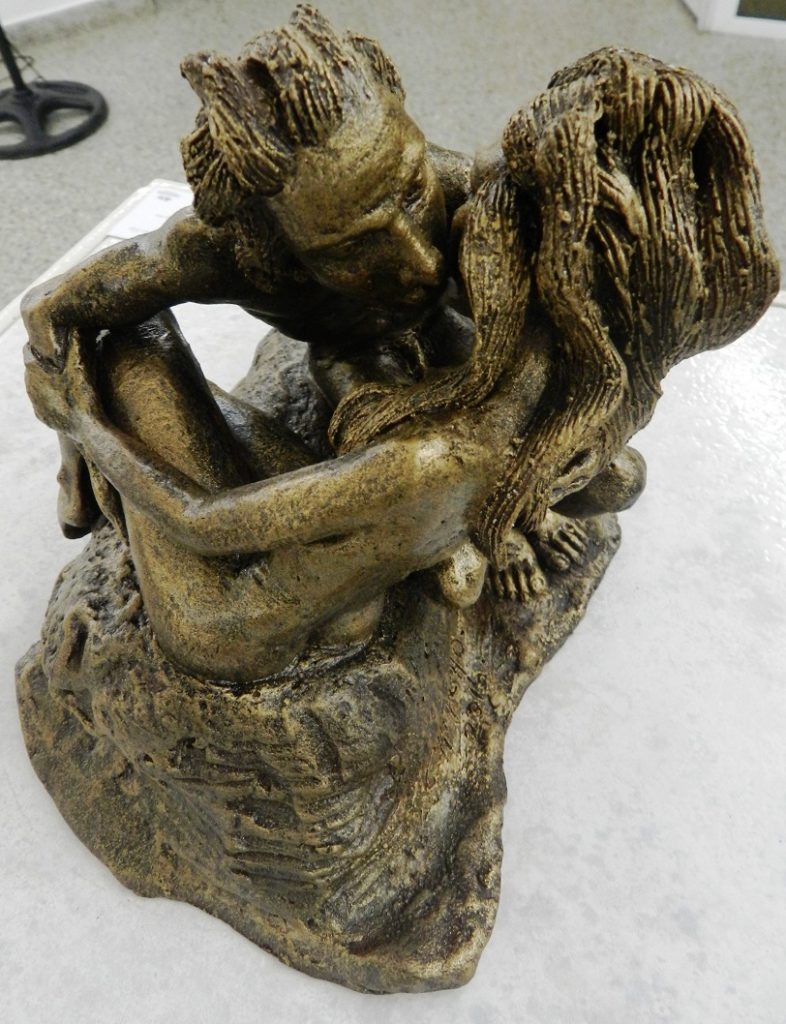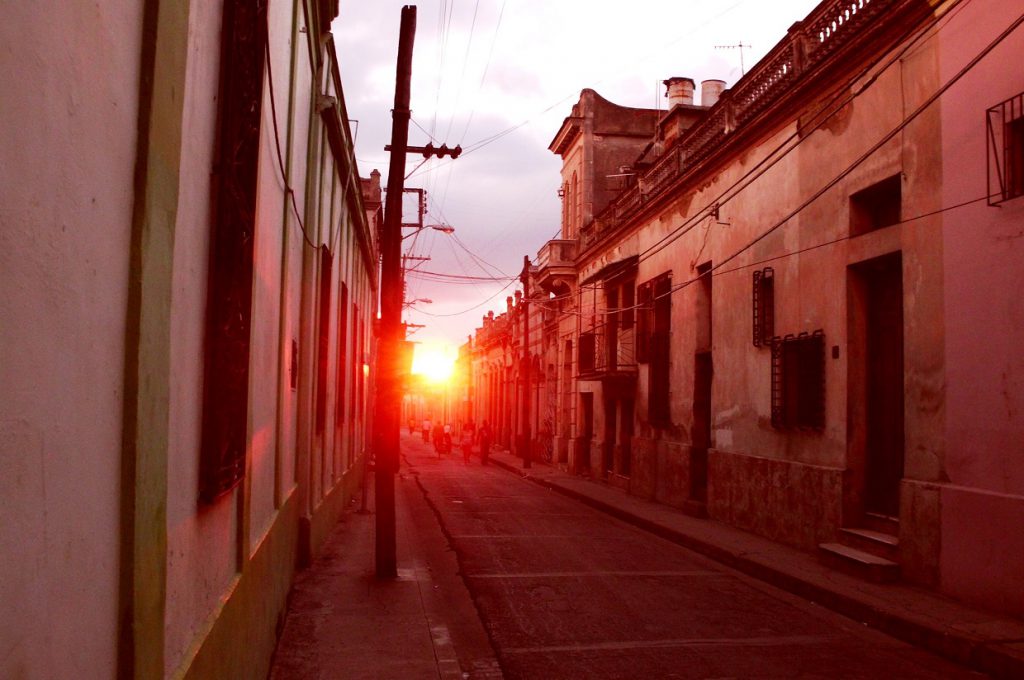Texto y fotos
Lázaro David Najarro Pujol
Debido al esfuerzo de un grupo de integrantes de la filial agramontina de la Asociación Cubana de Artesanos Artistas (ACAA), entre otros, enriquece la memoria histórica de la organización, la compilación periodística La piel rojiza del Camagüey. La cerámica, patrimonio de la ciudad.
El texto ha sido traducido por varias casas editoriales europeas al alemán (Die rötliche Haut von Camagüey), ingles (The reddish skin of Camagüey), francés (La peau rougeâtre de Camagüey), italiano (La pelle rossastra di Camagüey), portugués (A pele avermelhada de Camagüey) y ruso (Красноватая кожа Камагуэя).
En la compilación (veinte capítulos y 140 páginas), se incluyen más de un centenar de fotografías para resalta la labor de grupo de artistas afiliados al ACAA y colaboradores. Devienen apuntes para la historia de la cerámica en la también conocida Ciudad de los Tinajones.
Es una selección de trabajos publicados en distintos sitios de Cuba y el extranjero, entre los que están el portal nacional de la UNEAC, Primicia Diario, CamaguebaxCuba, Prensa Latina, Turismoencubacom, Radio Nuevitas y Radio Camagüey.
Camagüey es una región, en la que la cerámica tiene carta mayor de presentación. Varias generaciones creadoras han desarrollado con maestría un oficio de herencia aborigen y retomado por españoles, fundamentalmente catalanes, con lo que aprovecharon las bondades de los yacimientos de barro aquí existentes.
Este libro propone un encuentro con esos hombres que hoy hacen del barro piel de la ciudad rojiza de tejados y campanarios que desafían la infinitud del tiempo.
En la introducción a La piel rojiza del Camagüey… el prestigioso ceramista Nazario Salazar, afirma: Convertido en contenedor de sólidos o líquidos, la utilidad del barro se hizo evidente de forma simultánea en fecha perdida en el tiempo, ya que, en su grado más simple, la cerámica no necesita de instrumentos sofisticados para su elaboración: bastan necesidad, ingenio y las diestras manos del hombre.
La Cuba precolombina también poseyó artefactos elaborados por obradores de diferentes culturas agro-alfareras, de lo que el colonizador ibérico dejó pocos vestigios, al introducir, paralelamente a sus intereses depredadores, hábitos, gustos, obrajes ancestrales y costumbres que convirtieron a nuestra villa, en símil de las variopintas ciudades, al estilo del siglo XVI europeo.
Precisa el también miembro de la Unión de Escritores y Artistas de Cuba (UNEAC), que el 13 de marzo de 1516 arriba a Santa María del Puerto del Príncipe el primer alfarero peninsular a bordo del carabelón Osado, procedente de Sevilla. En el censo demográfico y socio–económico de 1519 ya se señala la alfarería nativa de Puerto Príncipe y desde finales de 1522, se exporta a través de la Casa de Contratación de Sevilla.
Puntualiza Nazario Salazar: «En la actualidad, mujeres y hombres del barro, fruto directo de la simiente plantada por el abnegado maestro alfarero de antaño, brindan a las más disímiles instalaciones y plazas de toda Cuba, la gallarda presencia de la pieza más significativa de nuestra cerámica: el tinajón, pieza primigenia, punto de partida para los hacedores de la actual cerámica camagüeyana, una valoración de cuya obra recoge acertadamente esta selección de trabajos periodísticos…»
 La piel rojiza del Camagüey
La piel rojiza del Camagüey  Autor Ramón Jesús Torres Valls. Título Amanecer. Técnica Pátina en frío. año 2016
Autor Ramón Jesús Torres Valls. Título Amanecer. Técnica Pátina en frío. año 2016

To highlight a city where ceramics are heritage
Beauty comes from the heart and spills through the fingers of the potter, Bernard Leach, English potter
Text and photos Lázaro David Najarro Pujol / Translated by Linet Acuña Quilez
Camagüey, Cuba, Jul 2.- Due to the efforts of a group of members of the Agramontina branch of the Cuban Association of Artisan Artists (ACAA), among others, the journalistic compilation La piel redjiza del Camagüey enriches the historical memory of the organization. The ceramics, heritage of the city.
The text has been translated by several European publishing houses into German
In the compilation (20 chapters and 140 pages), more than a hundred photographs are included to highlight the work of the group of artists affiliated with the ACAA and collaborators; they become notes for the history of ceramics in what is also known as the City of the Tinajones.
It is a selection of works published in different digital sites in Cuba and abroad, among which are the UNEAC national portal, Primicia Diario, CamaguebaxCuba, Prensa Latina, Turismoencuba.com, Radio Nuevitas and Radio Camagüey.
Camagüey is a region, in which ceramics have a major letter of presentation, several creative generations masterfully developed a craft of aboriginal heritage and retaken by Spaniards -fundamentally Catalans- with which they took advantage of the benefits of the existing clay deposits in the region .
The book proposes an encounter with those men who today make the mud skin of the reddish city of roofs and bell towers that defy the infinity of time.
In the introduction to The Reddish Skin of Camagüey… the prestigious ceramist Nazario Salazar, states: “Converted into a container for solids or liquids, the usefulness of clay became evident simultaneously on a date lost in time, since, in its degree more simply, ceramics do not need sophisticated instruments for their elaboration: necessity, ingenuity and the dexterous hands of man are enough ”.
Pre-Columbian Cuba also possessed artifacts made by workers from different agro-pottery cultures, of which the Iberian colonizer left few traces when introducing, in parallel with their predatory interests, habits, tastes, ancestral crafts and customs that made the town of Santa María of the Port of the Prince in simile of the various cities in the style of the European 16th century.
The also member of the Union of Writers and Artists of Cuba (UNEAC) specifies that on March 13, 1516, the first peninsular potter arrived at Santa María del Puerto del Príncipe aboard the Osado carabelón, coming from Seville. In the demographic and socio-economic census of 1519, the native pottery of Puerto Príncipe is already indicated and since the end of 1522 it has been exported through the Casa de Contratación de Sevilla.
Nazario Salazar points out: “At present, women and men of the clay, direct fruit of the seed planted by the self-sacrificing master potter of yesteryear, offer to the most dissimilar facilities and squares in all of Cuba, the gallant presence of the most significant piece of our ceramics: the tinajón, the starting point for the makers of current Camagüey ceramics, an assessment of whose work accurately reflects this selection of journalistic works ”
Camagüey es una región, en la que la cerámica tiene carta mayor de presentación. Varias generaciones creadoras han desarrollado con maestría un oficio de herencia aborigen y retomado por españoles, fundamentalmente catalanes, con lo que aprovecharon las bondades de los yacimientos de barro aquí existentes.
Este libro propone un encuentro con esos hombres que hoy hacen del barro piel de la ciudad rojiza de tejados y campanarios que desafían la infinitud del tiempo.,
https://primiciadiario.com/archivo/2021/la-piel-rojiza-del-camaguey-ciudad-donde-la-ceramica-patrimonio/